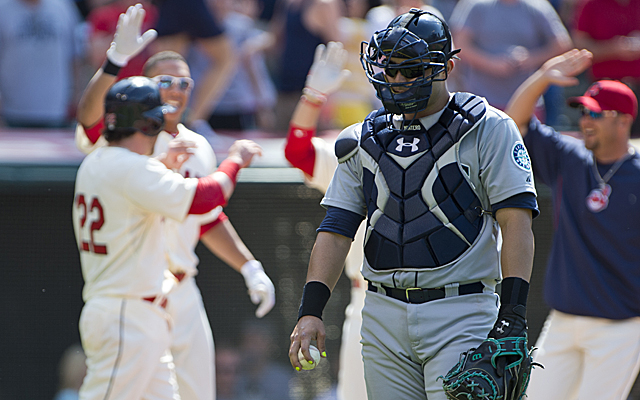
More MLB: Scoreboard | Standings | Probable Pitchers | Sortable Stats | Odds
In Saturday afternoon's Indians-Mariners game, the home Indians got runners on second and third with no outs in a tie game in the bottom of the ninth inning. Nick Swisher was due up for the Indians, but nearly everyone watching knew he wasn't going to get a chance to swing the bat.
| More on MLB |
| Related links |
True to old-school form, Mariners manager Eric Wedge ordered the intentional walk, loading the bases on purpose. Let's ignore the result -- an Indians victory -- because second-guessing based on the result isn't a sound way to make a decision. Sometimes the play will work and sometimes it won't. That's baseball. That's life. Let's just examine the decision-making process.
Is conventional wisdom correct here? The mind-set is you put the batter on to load the bases, enabling a force out at any base, and hope for a double play. Some data suggests this is the wrong move, though.
Using Tom Tango's run expectancy matrix, the chances of scoring a run "at some point in the inning" with the bases loaded and no one out is better than with runners on second and third and no outs. The difference is slight, data from every completed inning from 1950-2010 -- hardly a fluky small sample -- says across the board that intentionally walking the batter to load the bases actually increases the offense's chances of scoring.
Over at Baseball Prospectus, the 2013 data shows that more runs (2.2386 on average) score with the bases loaded and no outs compared to runners on second and third and no one out (1.8909). Again, the difference is relatively small, but the data points to the intentional walk actually helping the offense.
Data aside, there are other factors that matter. How about the fact that a walk or hit batsman ends the game for the team on defense? Logically speaking, pitchers will likely have better success when they have at least a small margin for error concerning the strike zone. It's also much easier to attempt to let the batter get himself out -- by swinging at a bad pitch -- when knowing a walk doesn't end the game.
Now, the dissenters will say the defense will have a better shot at getting outs with the bases loaded. I'm not sure. With no outs and runners on second and third in a tie game in the bottom of the ninth (or any extra inning), the defense has to go home with any batted ball. They have to do the same with a batted ball when the bases are loaded, too. Is the difference of allowing the catcher to step on home plate instead of tagging the runner enough to mitigate the actual percentages that show the odds of scoring are better with the bases loaded? No. Not a chance. The numbers don't lie.
I'm not picking on Wedge here because there are at least 25 managers who would have done the same thing without even batting an eye. And maybe that's the real problem. They aren't actually thinking things through and instead are just doing things they way they've always been done -- just because that's how they've always been done.
Obviously there are times when the matchup might dictate putting a guy on base and sometimes different circumstances dictate different actions. I understand that. This shouldn't be a hard-and-fast rule.
Generally speaking, though, it is a hard-and-fast rule for most major-league managers. That's a mind-set that needs to change.
Oh, by the way, the Indians won when Mark Reynolds hit an infield grounder that Brendan Ryan made a diving stop on. Ryan's throw home, though, pulled catcher Jesus Montero off the plate, ending the game.
